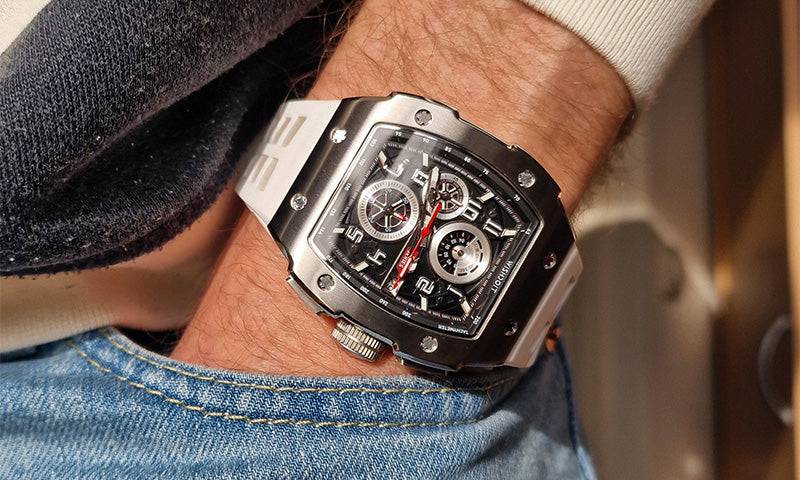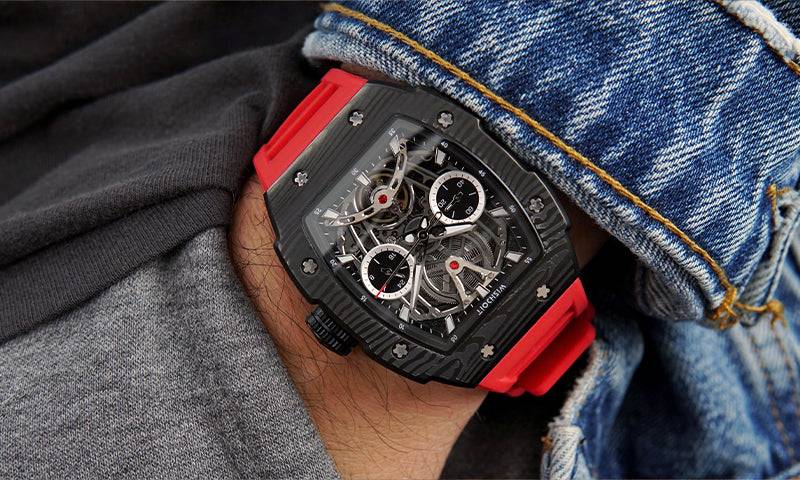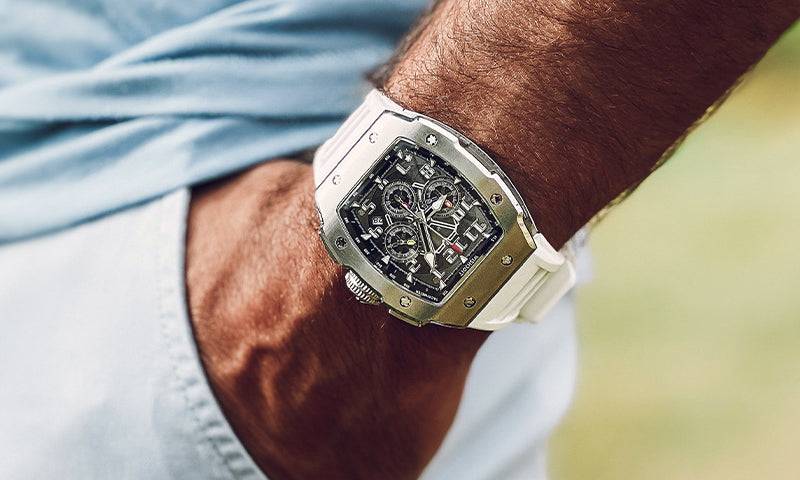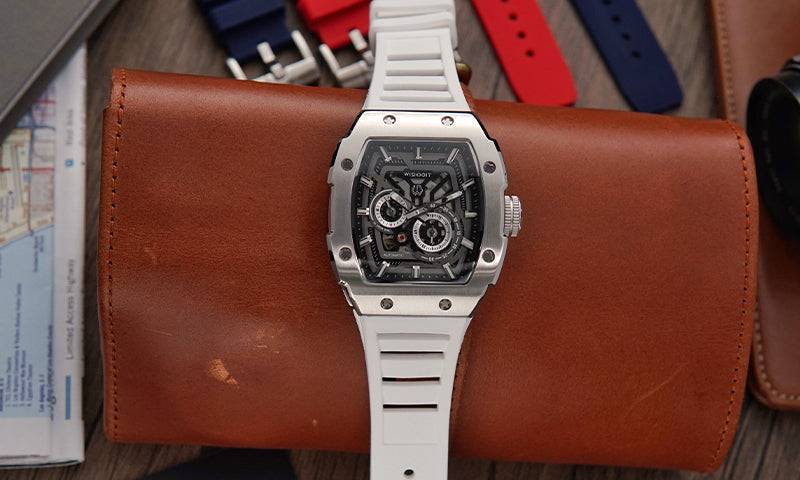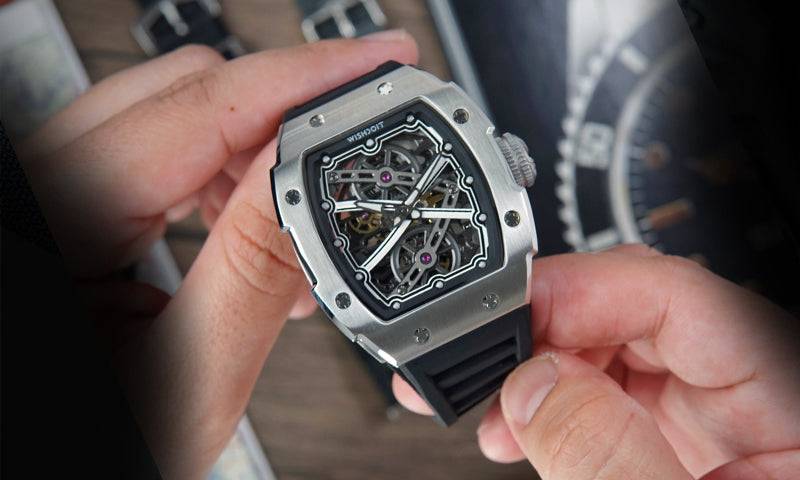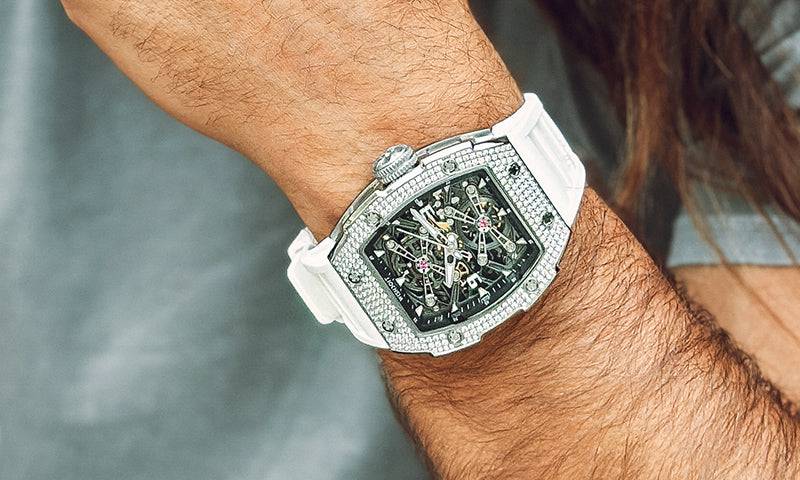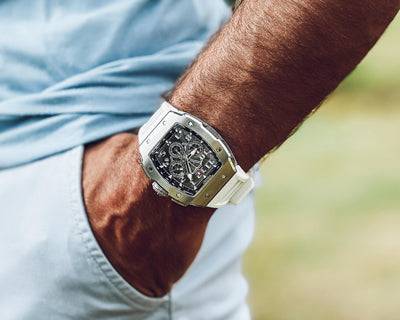The functions of the inner and outer rings of a diving watch are very different. Divers like to carry a small amount of oxygen tanks, in order to reduce the weight underwater, but the amount of oxygen is related to the size of the oxygen tank, so people who are familiar with diving equipment will bring a device to measure the amount of oxygen. The diving watch strengthens this need in time. The rotating outer ring can be said to be the biggest feature of the diving watch, which plays the role of reminding the diving time. The scales on the rotating bezel are 15, 30, and 45, because the general diving oxygen cylinder can only last for 45 minutes, and some are marked with a 60-minute scale. The first 15 minutes are colored or specially marked, because divers will strictly abide by the 15-minute safety stop during ascent to completely release the nitrogen absorbed from the tank.
Usually, you only need to turn the bezel when diving, so that the 0 scale on the bezel is aligned with the minute hand, and then look at the scale on the bezel after the minute hand moves to know the diving time. Of course, you can also count down, first know your diving time, turn the bezel to align the minute scale with the minute hand, and then the time when the minute hand reaches the 0 scale is exactly your diving time, which means that the position of the 0 scale is your diving limit time.
The rotation of the external bezel is designed to be in a single counterclockwise direction, which is to ensure that the calculation time is only counted more, not less, to prevent misoperation from prolonging the time and causing danger. There are professional fluorescent coatings on the scale and numerals, which are easy to display clearly when the underwater light is dim. In recent years, the emerging built-in chronograph bezel has no rotation direction restrictions, because the crown that controls the bezel must be locked before launching into the water. The built-in chronograph bezel can ensure the prompt function without the need for additional openings on the case. Another advantage is that there is no need to clean up the mud and sand in the seams of the bezel case after the water is out.
All diving watches are equipped with striking luminous hands and scales, because divers are often in the dark and deep sea, so the hands, scales or surfaces of diving watches are usually coated with fluorescent materials, and the size of the hands and scales are deliberately enlarged, In order to make it easier for users to read the time.
An early luminous material was Radiomir, which was discontinued due to its excess radiation. The most commonly used luminous materials are Super-LumiNova and tritium trachea. Super-LumiNova is a new material, it absorbs the gamma particles in the light to store light and can last for more than 10 hours, but the intensity of the light will decay after a certain period. Tritium tube luminous (also called "gas lamp") is a great leap forward in modern luminous technology. The use of tritium gas tubes is a proud tradition of Ball. The advantage is that self-illumination is not only bright, but also has a long lifespan - it is said that the lifespan can be as long as 25 years.
The powerful luminous effect allows the instrument to illuminate itself in complete darkness without having to borrow auxiliary lighting that could be spotted by the enemy.




